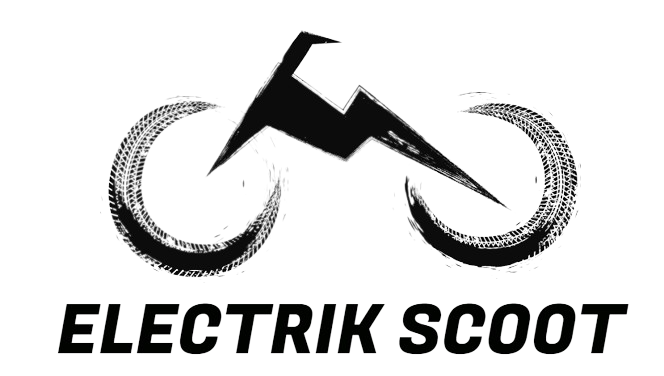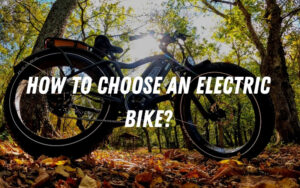Electric bikes have revolutionized the way we commute and explore our surroundings. With their eco-friendly nature and enhanced convenience, they've become a popular choice among riders. If you're considering a 1000W electric bike, you might be wondering, "How fast does a 1000W electric bike go?" In this article, we'll dive into the intricacies of electric bike speed, the factors influencing it, and what you can expect from a 1000W electric bike's performance.
Table of Contents
How Fast Does a 1000W Electric Bike Go?
A 1000W electric bike can reach impressive speeds, typically ranging from 28 to 35 miles per hour (45 to 56 kilometers per hour). The speed, however, can vary based on several factors that influence an electric bike's performance.
Factors Affecting Electric Bike Speed
Terrain and Elevation
The type of terrain you're riding on significantly impacts the speed of your electric bike. On flat surfaces, you can expect to reach higher speeds more easily. However, when tackling uphill roads or steep inclines, the speed might decrease due to the motor's power limitations and the effort required.
Rider’s Weight
The weight of the rider plays a role in an electric bike's speed. Heavier riders might experience slightly lower speeds compared to lighter riders, as the motor has to work harder to maintain the desired pace.
Wind Resistance
Wind resistance is another crucial factor. Just like conventional bicycles, electric bikes are affected by wind resistance. Riding against a strong headwind can reduce your speed, while riding with the wind at your back can enhance it.
Battery Health and Capacity
The condition and capacity of the battery impact how fast a 1000W electric bike can go. A fully charged and well-maintained battery can provide better performance and maintain higher speeds for longer durations.
Tire Pressure and Condition
Proper tire pressure and tire condition are essential for optimal speed. Underinflated tires can create more rolling resistance, thereby slowing down the bike. Regular maintenance and keeping the tires properly inflated can contribute to better speed.
Performance Expectations of a 1000W Electric Bike
A 1000W electric bike offers a satisfying blend of speed and power. It's designed to provide an exhilarating riding experience, whether you're using it for daily commutes, recreational rides, or off-road adventures.
The main issue is that these e-bikes are frequently certified at more incredible speeds and are intended for off-road use. As a result, using them on the road will imply that you are breaking the law. These powerful e-bikes are not suitable for frequent, everyday travel.
Battery Capacity, Speed, and Calculating Speed
| Battery + Motor (Flat Terrain 165 lbs Male) | Maximum Speed | Average E-Bike Cost | Average Charge Time |
| 1500w | 40mph | $2,000+ | 120 Minutes |
| 1000w | 35mph | $1,000-1,500 | 80 Minutes |
| 750w | 28mph | $750-1,500 | 60 Minutes |
| 500w | 25mph | $750-1,250 | 40 Minutes |
| 250w | 20mph | $500-1,000 | 20mMinutes |
While electronic batteries typically vary from 500w to 1500w, e-bike packs usually come in 250w, 500w, and 750w. Many e-bikes use lithium-ion batteries, so we may presume yours will as well.
Watt-hours are one method to assess a bike's power capacity, and they're easy to calculate. To begin, multiply the voltage by the current battery's amp hours. Multiply the two (3610=360) to obtain 360 if the battery is 36 volts and the battery pack is 10-ah. With a 360 watt-hour battery, you can travel up to 18 kilometers.
How Can I Make My Electric Bike Go Faster?
Although your e-speed bike is voltage-dependent, you may be able to travel quicker than 20 miles per hour. Many high-end super-charged e-bikes with accessible 500-watt motors, for example, include an "off-road only" option.
Whenever you assist in pedaling, your bike may achieve speeds of up to 25 mph. Batteries produce greater voltages with a more excellent state of charge. As a result, maintaining up to charge is essential if you want to move quicker.
However, such impacts are only usable in suitable outdoor landscapes and open spaces. It varies greatly depending on the pack, preserve, and authority in question. Thus, before speeding away at 25 mph, make sure to contact the neighbors to avoid crashing!
The Most Powerful Electric Bike
The Stealth Bomber is by far the most powerful electric bike in the marketplace. It has a 1.5-kilowatt hour rechargeable battery and a 4-hour super-charging mechanism that can work on 110 to 240 volts and weighs 116 pounds
What is the Maximum Speed of E-Bike?
You might well have read about electric bikes traveling quite swiftly when you first started, but this is not entirely accurate. Bicycles, like bike riders, come in a wide range of wheel sizes, speeds, and even comfort levels. Any old-style bike, in fact, might wind up riding extremely quickly down a steep slope.
When pedaling, you can go as fast as your pumping ability allows. Many e-bikes, meanwhile, stop providing electric assistance once they reach 20 miles per hour. This is presuming you don't use the low vantage point or even assist with pedaling.
It is a legal limit for the safety of both riders and pedestrians.
Is 20 MPH Considered Fast on an E-Bike?
Although 20 miles per hour might appear to be a light speed restriction, it is still pretty enough. While we advocate riding as securely as practicable, professional riders often discover methods to speed up the process.
It's crucial to remember that most bicycles travel at around 12 miles per hour, with the majority hardly exceeding that. As a result, you should bear it in mind for the sake of safety and compliance. Furthermore, in Europe, where e-bikes are widely developed, the top speed is 15 mph. Therefore we can get away with 20 mph in the US.
The Dangers of Superfast E-Bikes
To travel from point A to point B as soon as humanly possible, it's enticing to modify an e-bike to go quicker than 20 mph (32.19 km/h). Biking faster than 20 mph (32.19 km/h) is risky for you and other walkers since there isn't adequate regulation in place in all 50 US states.
There are three types of superfast illegal e-bikes:
- Retro-fit Kits – People will purchase ready-made components which will enable users to alter the peak speed of the motors using the software. Although legal kits are widely accessible, any or all of them may be modified to achieve unlawful rates.
- Off-The-Shelf-Models – Although they can't be marketed as e-bikes, many businesses will promote bikes that go faster than 28 mph (45 km/h). Manufacturers will not hide the fact that these e-bikes surpass legal speed restrictions to sell them.
- Tuning/Chipping – To deactivate the pace limitation on older e-bikes, disconnect the speed limiter and flip the wheel spokes horizontally. Instead, the operator will attach a tiny electronic device to it, allowing it to operate at an unlawfully high speed. Whereas these motorcycles seldom go quicker than 28 mph (45 km/h), they are nonetheless capable of gravely injuring or killing a human.
FAQs
How long does the battery last on a 1000W electric bike?
The battery life on a 1000W electric bike can vary depending on factors like terrain, rider's weight, and assistance level. On average, you can expect a range of 20 to 50 miles (32 to 80 kilometers) on a single charge.
Can I ride an electric bike in the rain?
Yes, you can ride an electric bike in light rain. However, it's advisable to avoid heavy downpours, as excessive water exposure can damage the electrical components. If you do ride in wet conditions, make sure to dry the bike thoroughly afterward.
Do I need a license to ride a 1000W electric bike?
Regulations regarding electric bike licenses vary by location. In many places, a 1000W electric bike is classified as a regular bicycle, and no license is required. However, it's essential to research the specific regulations in your area.
Can I pedal the electric bike like a regular bicycle?
Yes, most electric bikes come with pedal-assist modes that allow you to pedal just like a regular bicycle. The electric motor provides assistance based on your pedaling effort, making it easier to ride uphill or cover longer distances.
Are electric bikes suitable for long distances?
Electric bikes are well-suited for long distances, thanks to their motorized assistance. They allow you to cover more ground with less effort, making them an excellent choice for commuting, touring, and exploring new routes.
How do I maintain a 1000W electric bike?
Regular maintenance includes checking tire pressure, keeping the chain lubricated, and ensuring the brakes are functioning correctly. It's also essential to periodically inspect the battery, motor, and electrical connections for any issues.
Conclusion
In conclusion, a 1000W electric bike can reach speeds ranging from 28 to 35 mph, providing an exciting and efficient mode of transportation. The speed is influenced by factors such as terrain, rider's weight, wind resistance, battery health, and tire condition. Whether you're zipping through city streets or embarking on outdoor adventures, a 1000W electric bike offers a dynamic and enjoyable riding experience. Remember to consider the maintenance needs and regulations in your area to make the most of your electric bike journey.
When your electric bike fulfills these capabilities and criteria, you may ride it on regular bike paths, roads, and even walkways in many jurisdictions, just like a traditional bicycle.



